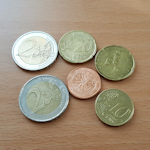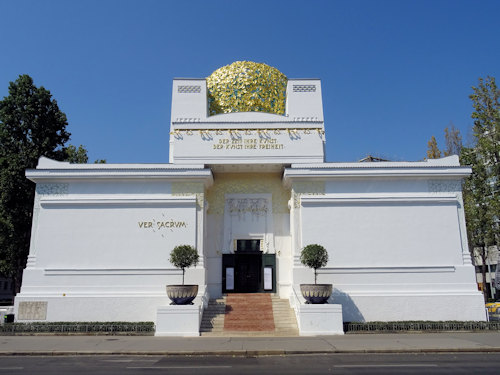
The currency in Austria is the Euro (symbol: €) and has been ever since January 1st, 2002. One Euro is made up of 100 cents.
- Carry some Euro notes and coins with you in Vienna (it’s not a cashless society)
- €1 & €2 coins are useful for museum lockers
- 20 & 50 cent coins are great for those public toilets that are not free
- See also:
The Euro

(Vienna’s Secession building appears on the standard Austrian 50 cent coin)
The Euro currency is, of course, shared with numerous other European countries within the Eurozone: Belgium, Germany, Ireland, Greece, Spain, France, Italy, Cyprus, Luxembourg, Malta, The Netherlands, Portugal, Slovenia, Slovakia, Croatia, Finland, Estonia, Latvia, and Lithuania.
Austria uses the full range of Euro coins (one, two, five, 10, 20 and 50 cent coins plus the one and two Euro coins) and notes (five, 10, 20, 50, 100, 200 and 500 Euros). Vienna appears on three of the Austrian-minted coins:
- The Secession building (50 cent coin)
- Belvedere (20 cent coin)
- Stephansdom cathedral (10 cent coin)
Since each country’s coins are accepted across the Eurozone, you’ll find those in Vienna feature designs from many countries. German-minted coins seem quite common, for example.
Before the Euro
Between 1925 and 2002, Austria had the Schilling (symbol: ATS) which replaced the Krone largely used in the time of the monarchy. There was a small break between 1938 and 1945 when the German Reichsmark became official currency (for reasons which are both obvious and extremely unfortunate).
You’ll still hear people using the Schilling in conversation, especially older folk. However, the transition to the Euro went relatively smoothly, though it wasn’t helped by an exchange rate of 13.7603 Schillings to 1 Euro. People simply don’t have the right number of fingers for that calculation.
Euro tips
- Cash remains popular in Vienna. Credit cards are accepted in many places, but nothing like as much as in the UK/USA, for example. Debit cards are very common though
- Carry some cash for the Christmas, Easter and New Year markets. Many stallholders at the seasonal markets will take debit cards, but not all. Most markets have an ATM on site
- Using €200 and €500 notes in Vienna is likely to get you a nasty look from stores and many places do not allow staff to accept these denominations. Frankly, I’ve never seen those two designs out in the wild (which might say more about my income than their popularity)
- Obviously, small shops and market vendors may not have much change, so will appreciate smaller notes and coins
- Most ATMs in Vienna allow you to withdraw your choice of notes
- Carry a few 1 and 2 Euro coins with you: you might need them for shopping trolleys, and many lockers at museums and other sights only lock if you insert a (returnable) €1 or €2 coin
- ..and maybe carry a 50 cent and 20 cent coin, too. Some public toilets require a 20 cent or 50 cent payment, or a tip (50 cents or €1 is acceptable) for the attendant